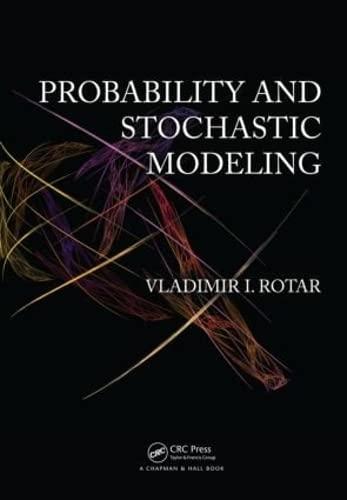Assuming that in Exercise 3, 0 < p 1 < 1, 0 < p 2 < 1,
Question:
Assuming that in Exercise 3, 0 < p1 < 1, 0 < p2 < 1, can we say without calculations whether the ergodicity property holds? Find the limiting distribution. What is happening when p1 gets smaller, very small? Explain the answer from a common-sense point of view.
Exercise 3
In a physical space, there is a site and particles are arriving at the site. At time moment t = 0, the site is vacant. At moments t = 1,2, ..., exactly one particle arrives with a probability of p1. If the site is vacant, the particle occupies the site. If the site is occupied, arriving particles do not enter and are not taken into account. Once a particle occupied the site, at each future moment, it leaves the site with a probability of p2 and remains there with probability 1− p2, independently of the prehistory and of whether a new particle has arrived. If at a moment t, a particle left the site and a new particle has arrived, the latter occupies the site.
In one of possible interpretations, the site is a server (say, an auto mechanic) and the particles are customers. In our model, if the server is busy, the customers leave the site. However, there are other possible interpretations. The particles may be electrons, and the site is an orbit (more precisely, a suborbit). The point is that not any electron may go to a suborbit that is already occupied; we skip details.
Let Xt be the number of particles in the site (so, Xt = 0 or 1). Show that Xt is a Markov chain and write its transition matrix.
Step by Step Answer:






